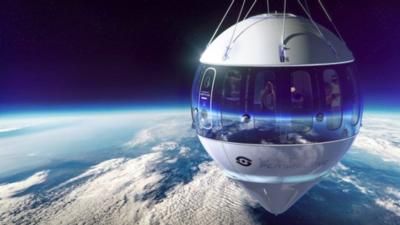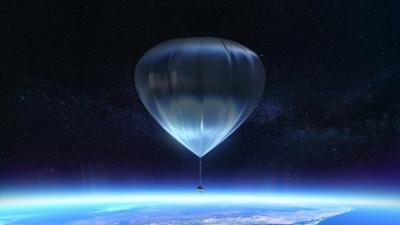Near-Space Helium-Balloon to Launch from Spain
HALO Space, a global space tourism company developed via Arthur D. Little’s Breakthrough Incubator Program, has announced the next step in its journey towards edge-of-space commercial tourism. Following a successful December 2022 test-flight of the company’s helium-balloon ascent platform from Indian soil, HALO Space is making ready for a second test-flight, which will ascend spaceward from southern Spain later this year.

A Breakthrough Incubator (BI) is a business model in which an entire end-to-end innovation process is externalized and conducted by a lead delivery partner managing a network of contributing concerns from ideation through to launch and commercialization.
Starting in 2025, HALO Space intends to lift eight passengers per six-hour flight to an altitude of 131,234-feet (forty-kilometers). The company hopes to carry ten-thousand passengers aloft—by dint of its helium-balloons—before the end of the 2020s. Passengers will experience the Overview Effect—an altitude-dependent visual phenomenon in which the Earth’s curvature and the overlying darkness of space are contemporaneously observed.
By offering safe, sustainable, and eco-friendly journeys, HALO Space aims to lead the commercial space travel market, which analysts predict will reach $14-billion by 2030. Since its inception, HALO Space—the space technology history of which stretches back to the Apollo missions of the late 1960s and early 1970s—has been supported by Arthur D. Little, an international management consulting firm founded in 1886 by MIT chemist Arthur Dehon Little.
HALO Space board-member and Arthur D. Little managing partner Thomas Kuruvilla stated: "HALO Space was established thanks to Arthur D. Little’s Breakthrough Incubator program, and this next test flight is a significant milestone in the development of space tourism. Each component of the HALO concept, including the stratospheric balloon, capsule prototype, onboard systems, and descent with parachute, has been successfully tested in collaboration with our technical partners. It demonstrates that the technology and safety measures are in place to make suborbital flights accessible to civilians in the near future.”
HALO Space intends to make four-hundred commercial trips and carry three-thousand passengers a year from 2029 onwards. Individual journeys are projected to cost between $100,000 and $200,000. HALO Space asserts, perhaps mistakenly, that its service and fee-schedule will make space-travel affordable for millions of people, thereby inspiring future generations of space explorers and innovators.
Halo Space’s helium-balloon platform, which the company refers to as its HALO system, was designed and built by five leading aerospace companies. The architecture, which HALO Space asserts sets the definitive safety standard for near-space ascent systems and operations, will operate year-round from spaceports on four continents. Site selection for subject facilities will be predicated upon predictability of local weather conditions, topography, overlying airspace, and touristic attractiveness.

HALO Space further asserts that its HALO system’s ascents and descents are sufficiently safe and gentle to allow individuals of virtually all ages and physical conditions to enjoy once-in-a-lifetime journeys to the edge of space. The company plans to operate sustainable, eco-friendly flights consistent with its commitment to environmental responsibility.
HALO Space CEO and Arthur D. Little senior advisor Carlos Mira remarked: “HALO Space will pave the way for near-space tourism, making it possible for ordinary people to travel to space and witness the beauty of our planet from a unique perspective. By making space accessible to more people, we hope to democratize access to space and create a more inclusive future for humanity.”
 NTSB Final Report: Rutan Long-EZ
NTSB Final Report: Rutan Long-EZ ANN FAQ: Turn On Post Notifications
ANN FAQ: Turn On Post Notifications Classic Aero-TV: ICAS Perspectives - Advice for New Air Show Performers
Classic Aero-TV: ICAS Perspectives - Advice for New Air Show Performers ANN's Daily Aero-Linx (06.28.25)
ANN's Daily Aero-Linx (06.28.25) Aero-News: Quote of the Day (06.28.25)
Aero-News: Quote of the Day (06.28.25)




